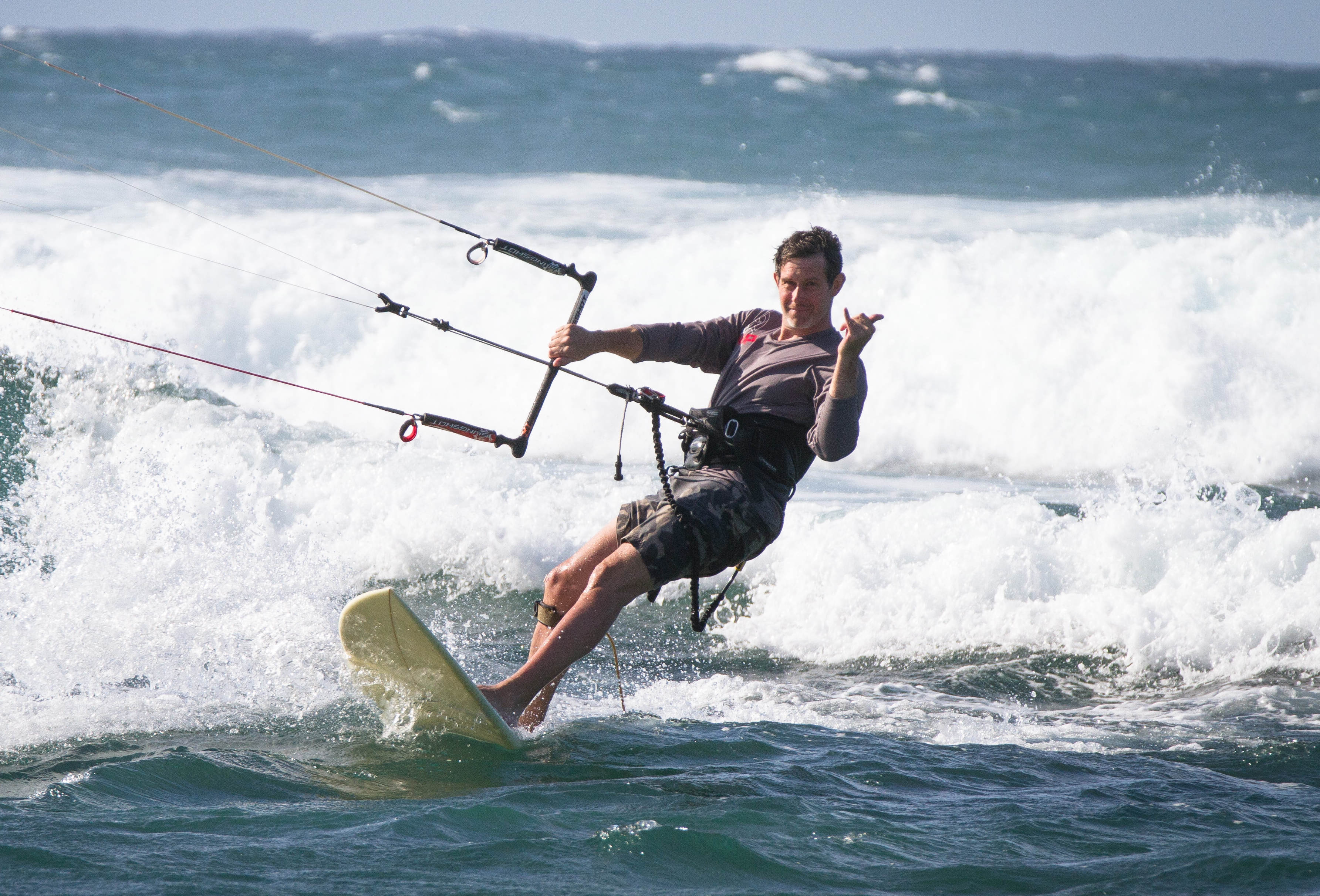So you just got back from a great trip to the beach where you saw some guys and girls doing awesome stuff on the water with a huge kite. Are you ready to invest in learning to Kiteboard/Kitesurf? Find out the important time, equipment, and safety considerations below.
Disclaimer: Kiteboarding is an inherently risky sport. Without learning, practicing, and using the mandatory safety skills the kiter can put themselves and others in peril. Know your ability and practice proper safety.
Getting Started in Kiteboarding –
Step #1
Assess Your Baseline Ability Level of the Fundamental, Prerequisite Skills for Kiteboarding:
- Kite-flying skills – ability to safely rig, launch, fly, land, and de-rig the kite;
- Board skills – experience doing sports where a rider moves over a surface while standing;
- Sailing skills – understanding wind-orientation, points of sail, sheeting/trimming, lift, drag, apparent-wind, and angle of attack and how they effect a kiteboarder as a sailing “system”;
- Water skills – ability to swim and be comfortable in and around the water; and,
- Patience and modesty – understanding that simultaneously executing the above skills successfully (e.g. – rig, launch from point A, go kiteboarding, return to point A, land, and de-rig) is difficult and that considerable time and concerted effort as a beginner will be necessary for success.
The more experience you have with each of these prerequisite skills,
the quicker you will progress!
Step #2
Get a good “Trainer Kite” in the 2-3 square meter range to learn and master basic kite-flying skills. This is the one skill group that most everyone must learn from scratch when starting. Trainer kites from brands such as Best, HQ, and Slingshot are good and may include an instructional DVD and wrist leash with your purchase.
Step #3 (to be worked on concurrently with Step #2)
Learn “Board Skills” (or build on the skills you may already have). Wakeboarding, surfing, snowboarding, windsurfing and skateboarding are all great ways to develop board skills. Windsurfing experience has the unique benefit of combining all the fundamentals above except kite flying. However, experience with any sport that works your balance while sliding or rolling in a standing position is a good prerequisite for kiteboarding.
Independent practice of board sports is strongly recommended and will make a huge difference because it allows you to focus solely on board technique without having to think about flying the kite.
Once kite basics are well practiced and your board skills allow it, a skateboard with helmet and pads can be used in a large, open parking lot to get the feeling of balancing on the board while flying the kite. Weather permitting, the same can be said for using a snowboard. Of course, always use the buddy system when learning (and do your best to avoid solo sessions later, especially as a beginner).

Step #4
Take lessons from an experienced kiteboarder. Kiteboarding CAN be safe and easy to learn, IF you get proper instruction AND regularly practice what is taught. However, trying to “figure out” this complex sport on your own can risk the health of: you, innocent bystanders, and everyone else’s beach access!
Not convinced you need lessons? Wake up! Check out these *** True Kitemares ***
Step #5
Get the right gear for your needs. During your lessons, use gear owned by the instructor or school, but be sure to inquire about what would be best suited for you to purchase based on your size, abilities, budget and desired/available riding conditions. Doing so will greatly help your understanding of what specific gear is best for you and make it much easier to select the correct gear when it’s time to buy.
Note: Please use the many resources available to you (internet, magazines, retailers, friends, etc.) during your pursuit of this exciting sport. Remember though, while kiters in the Rochester Windsports Community will likely be happy to support you in this endeavor, asking good questions and being well-informed, conscientious and tactful will go a long way to getting you the answers needed to get you riding the wind safely and successfully. Good luck!

